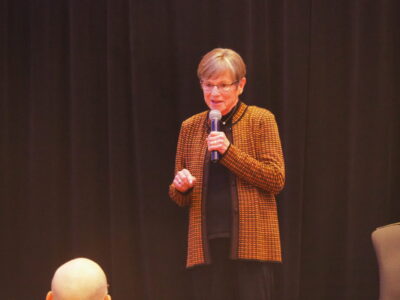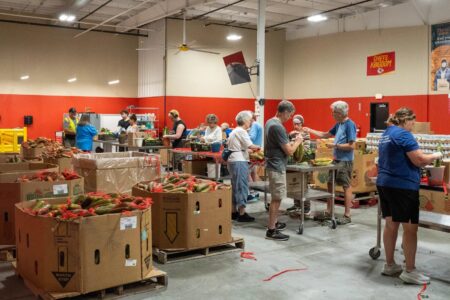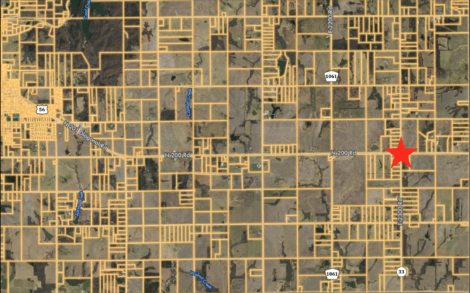KU opens multimillion dollar expansion of Kansas Geological Survey; new space to help with critical minerals, water
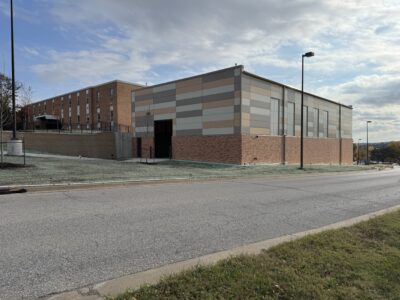
photo by: Chad Lawhorn/Journal-World
The new Watney CoreLab at the Kansas Geological Survey is pictured on Nov. 6, 2025.
States like Colorado, Wyoming and Utah may have mountains and canyons that beautifully fill picture windows, but Kansas has one type of window that makes geologists in those state’s envious.
A window to the world beneath our feet.
The Lawrence-based Kansas Geological Survey has one of the country’s largest collections of core drilling samples, which are cylinders of rock and soil that show the layers and minerals of the state’s subsurface.
In a world looking for everything from critical minerals to new sources of water, having a big window to see what’s below your feet might be a critical asset in the economy of the future. University of Kansas and state leaders are betting so, as they opened a new multimillion dollar expansion of the Kansas Geological Survey building on KU’s West Campus on Thursday.
The 5,500-square foot expansion is designed make it easier for researchers to access the tens of thousands of core samples that KGS has in its collection.
“It is truly an exceptional asset,” Jay Kalbas, director of the KGS and state geologist, said of the approximately 93,000 boxes of core samples from across the state.
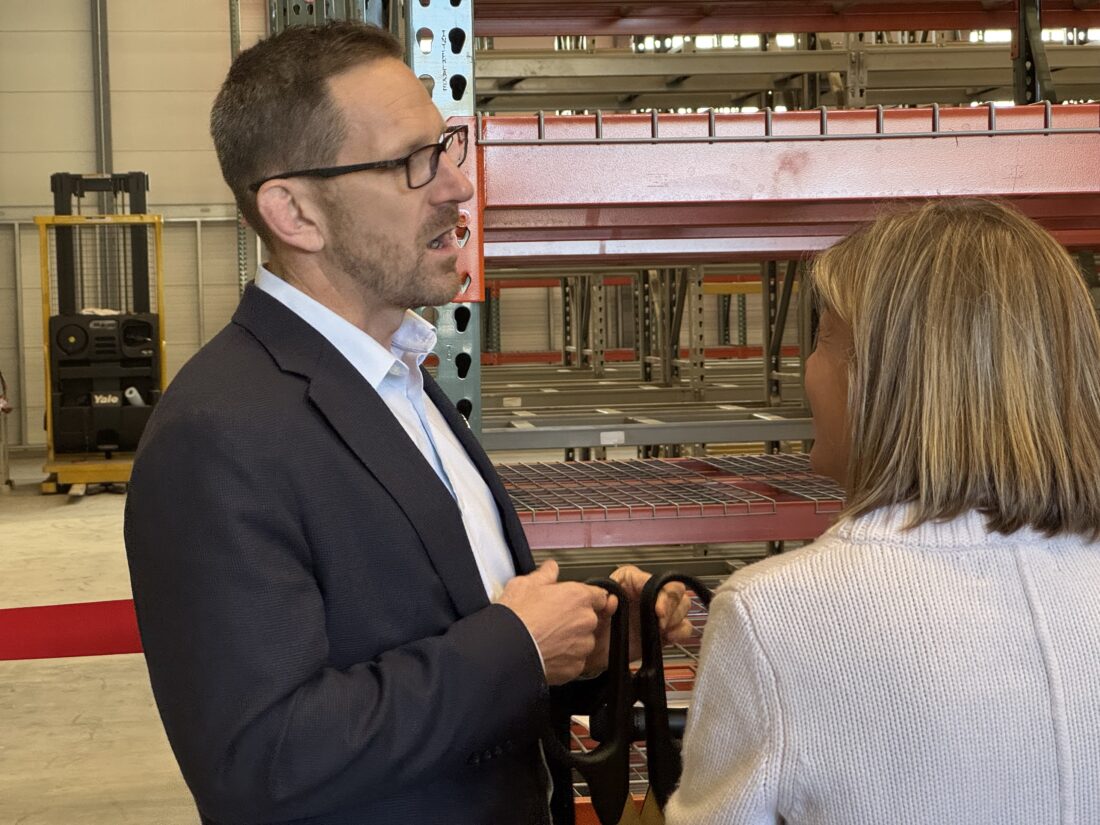
photo by: Chad Lawhorn/Journal-World
Jay Kalbas, director of the Kansas Geological Survey and state geologist, mingles at a KGS reception on Nov. 6, 2025.
The project will more than double the number of samples that can be warehoused at the KGS building, 1930 Constant Avenue, where researchers have access to sophisticated scanning equipment to analyze the samples.
The expansion received $3.8 million in state funding from the Kansas Legislature. KU Chancellor Douglas Girod, who was on hand to speak to several dozen attendees at a Thursday ribbon cutting, said it really wasn’t hard to convince lawmakers to provide the funding, once they learned how the samples are used.
Girod said KU leaders highlighted how the samples can be used to create projections about falling groundwater levels, can be used to help extend the life of valuable gas and oil wells, and that they also will be critical to helping scientists better understand earthquake activity in the state.
Plus, there’s a global issue he can point to these days.
“Understanding the rocks and materials themselves is incredibly important in this time when we are having national conversations about the importance of critical minerals,” Girod said. “The time is now for us to use this collection to really understand what assets we truly have underground, and how we might be able to leverage those more effectively.”

photo by: Chad Lawhorn/Journal-World
University of Kansas Chancellor Douglas Girod listens to presentations at a ribbon cutting for an expansion of the Kansas Geological Survey on Nov. 6, 2025.
Critical minerals — the type used in smart phones, batteries, wind turbines and other key pieces of technology — have become a flash point in the trade disputes between the U.S. and China. Currently, China is the leader in mining critical minerals, and the country has threatened to tighten export rules for the materials if it can’t reach favorable trade deals with the U.S..
Kalbas said the samples already have shown that Kansas has critical minerals beneath its surface, but now more research needs to be done to determine if they can be mined economically.
The expansion project took about three years to design and build, and is located just west of the main KGS building. The new facility, which contains rows of heavy-duty steel racks to store and catalog the cylinders of rock, has been named the Watney CoreLab, in honor of a longtime senior scientist at KGS.
Lynn Watney worked at KGS for 43 years before his death, and was an early steward of the society’s core collection. His widow, daughter and granddaughters were all on hand for Thursday afternoon’s ceremony. Karen Watney said her late husband would have loved the new research opportunities the building creates because studying rocks and minerals was his lifelong passion.
She told of how he would go to an old rock quarry as a young boy to collect rocks, and then have to get washed off with a garden hose before his mother would let him back in the house.
“He would display these rocks, glue them on to cardboard, draw pictures, and then he went so far as to name them,” she told the crowd. “He was writing the names of these rocks on cardboard with Crayons. That’s how young he was when he started this.”
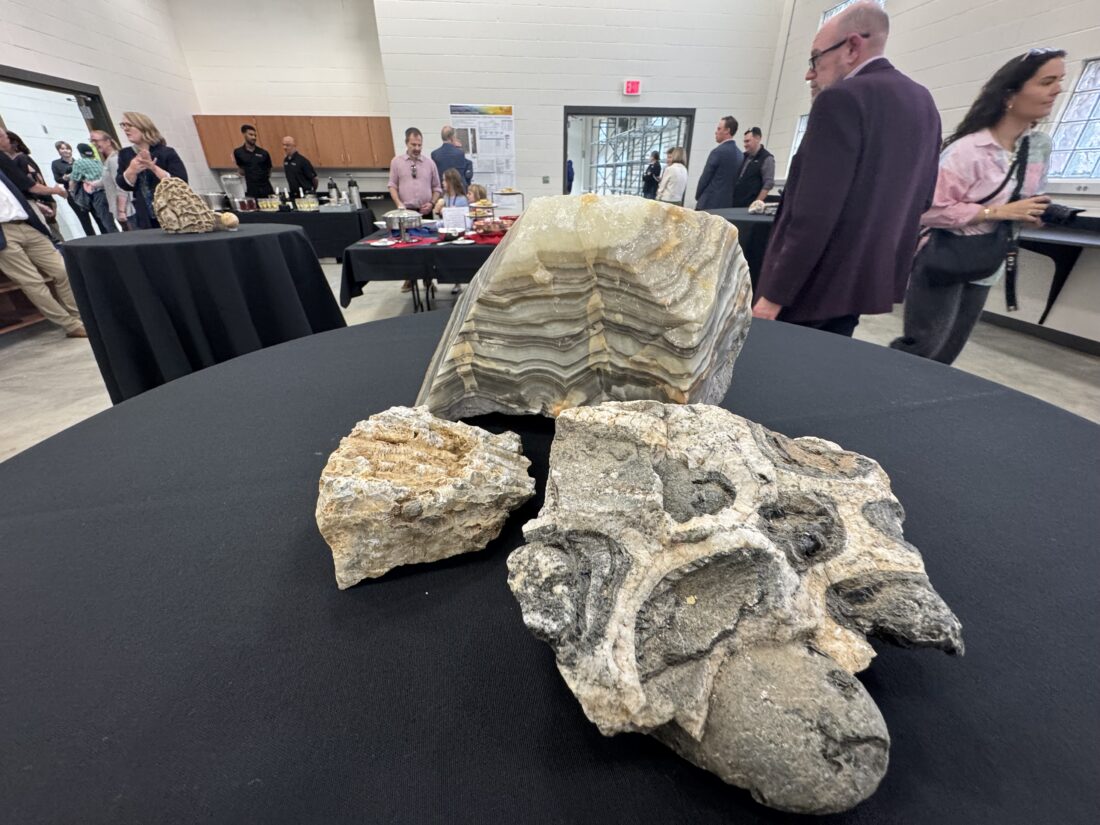
A variety of rocks and minerals are displayed at a reception at the Kansas Geological Survey on Nov. 6, 2025.


